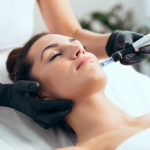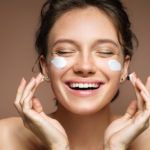Dermatology is actually a very broad category of services that are designed to improve your skin. But those services can encompass both medical and cosmetic procedures that are designed to help you look and feel your best. With a dermatologist in the Southlake Area to assist, you can do a great deal to improve your skin and you can definitely change the way you feel about yourself in the process. Because it’s all about getting the look that you want to feel comfortable with.
Medical Procedures
Medical and surgical dermatology means things like diagnosing and treating skin cancer, precancer, melanoma, and dysplastic moles. Procedures can vary greatly and may be non-invasive, minimally invasive, or surgical.
Non-invasive treatments include things like topical treatments or Blu Light while minimally invasive treatments could include liquid nitrogen. Surgical procedures can include the removal of cancerous or precancerous lesions or suspicious moles, among others. All of this is discussed with the professional that you decide to work with.
The most important thing is that you have the opportunity to talk with a professional and decide what you need and what you’re comfortable with when it comes to your medical treatment. Biopsies and more can also be done to ensure you get the proper care that you need. All you need to do is start with a team that you trust to take a look at your situation and help you with creating a plan to take care of it.
Medical procedures are extremely important because failing to get them done in a timely manner could be dangerous for your overall health. Also, the longer a medical condition is left alone the more difficult it could become to treat or remove. That means a more intense procedure for you and a longer or more difficult recovery.
Contacting a professional early on will help you reduce these risks.
Cosmetic Procedures
Cosmetic procedures are those that are not required for your health but may be necessary to help you feel your best and look your best at the same time. These cosmetic procedures can be quite extensive as well and there are a variety of different types of treatments and procedures that you can get.
The first step is to talk with a professional about just what would make you feel the best about yourself. What kind of changes would you like to make in order to always feel like you’re presenting your best self, the self that you want to be? You deserve to look and feel great all the time, and that’s what dermatology can help you with.
Procedures can include topical products, BOTOX, chemical peels, SculpSure, ICON, and Hydra Facial. Each of these has different outcomes and different ways that you can use them to achieve the look that you want. Talking with a professional will help you figure out which one (or ones) would help you achieve the ideal results for you. Then, you can set up a schedule to get started.
A treatment plan for your cosmetic procedures will help you get where you want to be faster and ensure that you are happy with the end result as well. The key is always to work with someone who can help you really understand what you’re ideal is. Whether that’s a minimally invasive treatment process or a more extensive process to provide more dramatic results.
What Do You Need?
The best thing you can do when it comes to dermatology is to figure out what it is you really want and need. Talking with a dermatology professional will allow you to best understand all of your options. First, you’ll be able to evaluate any concerning areas of the skin to determine if there are medical needs such as precancers or suspicious moles. Then, you can discuss treatment plans for those medical conditions.
If you do not have medical conditions that need treating you can jump right into discussing any cosmetic concerns that you have. From there, you and your dermatology professional will be able to discuss your goals and your future treatment plans. This will help you create the right path forward that will get you where you need to be, but it requires an open and honest conversation with a professional.
What to Do Next?
The best way to start any procedure is usually to go from least invasive to most invasive. But keep in mind that you want your procedure to be successful. For skin cancers, this might mean moving immediately to minimally invasive or surgical procedures because this can help you be healthier faster.
In other situations, you may be able to start with non-invasive or minimally invasive procedures and slowly work your way up until you get the results that you’re looking for. This helps you get the best possible results with the least side effects or potential for complications. And that is definitely going to help you feel a whole lot better.
Once you go over your concerns with a dermatology professional you’ll be able to set up your ideal procedures as well. For some, the idea of a surgical procedure may be too much. In that case, you may want to stick to less invasive methods as long as possible before moving to anything else. Or you might want to jump right in and see results quickly. While it’s generally best to work your way up, for some procedures getting right to the more extensive option may be the best way to go.
When you’re ready to get started on any type of procedure the best thing that you can do is call a dermatology professional like Compassion Dermatology in the Southlake area. We can work with you to figure out what you want or need to help you look and feel your best. From there, we can work with you to set up a plan to get you from where you are now to where you want to be. Just like that, you’re going to be on your way to what you’ve always wanted.


